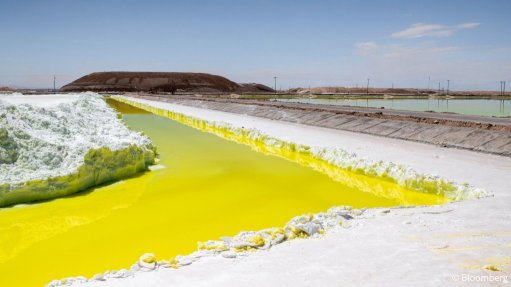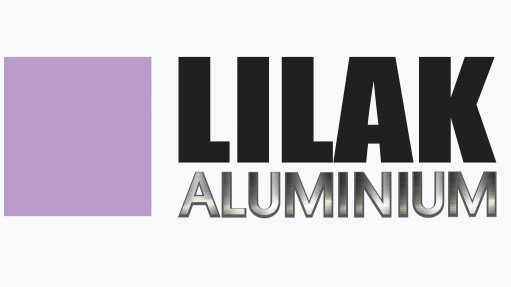Canadian miner announces technical report filing
Canadian miner Premium Nickel Resources (PNRL) announced in April that it had filed a technical report – in accordance with National Instrument 43-101 Standards of Disclosure for Mineral Projects – for the company’s 100% owned nickel, copper, cobalt (Ni-Cu-Co) and platinum-group elements (PGE) Selkirk mine in Botswana.
The company acquired the Selkirk mine together with associated infrastructure and four surrounding prospecting licences in August 2022 in an asset purchase agreement with the liquidator of Tati Nickel Mining Company (TNMC).
The Selkirk mine is a secondary asset to the company’s 100% owned flagship Selebi Ni-Cu-Co mine and includes a historical mineral resource estimate of 52.2-million tons at 0.32% nickel, 0.31% copper, 0.15 g/t platinum, 0.46 g/t palladium and 0.06 g/t gold.
The technical report, titled ‘NI 43-101 Technical Report, Selkirk Nickel Project, Northeast District, Republic of Botswana’ and dated April 12, was prepared for the company by consultancy firm G Mining Services in accordance with NI 43-101.
The Selkirk mine has been subject to prior economic studies.
The most recent study was a feasibility study undertaken by engineering consultant WorleyParsons on behalf of mining company BCL limited in 2015 and 2016, which was not prepared in accordance with, and does not comply with, NI 43-101.
The Selkirk technical report contains a summary of historic geological and environmental work carried out by the former operator, TNMC, including drilling and historical resource estimates. This comes in addition to recent work undertaken by PNRL, including archaeological work, metallurgical studies, core sampling and an underground grab sampling programme.
“The Selkirk surface deposit is located 75 km north of our flagship Selebi mine. The Selkirk deposit is a separate asset from our primary underground Selebi and Selebi North deposits, providing the company with an additional permitted source of Ni-Cu-Co and PGE resources. The NI 43-101 prepared Selkirk technical report is based on work completed between 1970 and 2016 by four previous owners, including 108 767 m of drilling in 505 holes,” comments PNRL CEO Keith Morrison.
The company’s technical plan this year at Selkirk will include both exploration and resource drilling (about 20 000 m), quality assurance or quality control legacy core resampling, geological and structural modelling and additional metallurgical testing.
“Our objective is to generate a NI 43-101- compliant resource estimate in the first quarter of 2024, and pending positive outcomes of the 2023 work programmes, complete an economic evaluation of a potential openpit operation.”
The Selkirk property includes a mining licence and four prospecting licences covering a total of about 141.28 m2. The mining licence contains the former producing Selkirk mine, which produced one-million tons, grading 2.6% nickel and 1.5% copper between 1989 and 2002.
PNRL’s comprehensive due diligence on the Selkirk mine included the analysis of historic data and collection of new data, including a proof-of-concept metallurgical study that established it was possible to produce two separate copper and nickel concentrates with potentially significant PGE content.
Selkirk Mineralisation
Selkirk is host to two types of mineralisation.
The first is massive sulphides, located within the metagabbro intrusion and small, massive sulphide accumulations at the base of the taxitic metagabbro intrusive. The second is matrix and disseminated sulphides as a halo surrounding and down-plunge of the massive sulphide body.
The disseminated-blebby zone that once contained the massive sulphide lens lies 50 m to 100 m above the basal contact of the footwall quartz diorite and mimics the footwall contact. Historical drilling suggests that the massive sulphide lens was synformal in shape, measured up to 70 m to 90 m wide, averaged 20 m thick and had a plunge extent of 200 m.
The disseminated-blebby sulphide mineralisation surrounding the massive sulphides is also synformal in shape and averages 120 m wide, 100 m to 150 m thick, and plunges shallowly to the south at 20°.
It is defined from surface over a down-plunge distance of 900 m, and remains open at depth. Mineralisation consists of pentlandite, pyrrhotite, chalcopyrite and pyrite.
At least three generations of dykes crosscut the mineralised metagabbro.
Between 2003 and 2016, over 80 000 m of diamond drilling was completed and several resource estimates, metallurgical studies and feasibility studies were completed by TNMC to evaluate the Selkirk deposit as an openpit operation.
These mineral resources are considered historic in nature, as insufficient data verification has been conducted to verify the reported tonnages and grades.
The most recent resource estimate reported combined measured and indicated mineral resources of 52.2-million tonnes at 0.32% nickel, 0.31% copper, 0.15 g/t platinum, 0.46 g/t palladium and 0.06 g/t gold using a lower cut-off of 0.20% nickel.
This block model takes into account all faults and offset blocks, shears, barren dykes, intrusions and loss zones that affect the mineralised portion of the Selkirk meta-gabbros.
The resource classification used a combination of kriging efficiency, minimum distance to composites and search ellipse dimensions. Lastly, the reporting cut-off was increased to 0.20% nickel to reflect 2016 mining and processing costs. An updated block with a smaller selective mining unit size (5 m × 5 m × 5 m) was created.
Article Enquiry
Email Article
Save Article
Feedback
To advertise email advertising@creamermedia.co.za or click here
Announcements
What's On
Subscribe to improve your user experience...
Option 1 (equivalent of R125 a month):
Receive a weekly copy of Creamer Media's Engineering News & Mining Weekly magazine
(print copy for those in South Africa and e-magazine for those outside of South Africa)
Receive daily email newsletters
Access to full search results
Access archive of magazine back copies
Access to Projects in Progress
Access to ONE Research Report of your choice in PDF format
Option 2 (equivalent of R375 a month):
All benefits from Option 1
PLUS
Access to Creamer Media's Research Channel Africa for ALL Research Reports, in PDF format, on various industrial and mining sectors
including Electricity; Water; Energy Transition; Hydrogen; Roads, Rail and Ports; Coal; Gold; Platinum; Battery Metals; etc.
Already a subscriber?
Forgotten your password?
Receive weekly copy of Creamer Media's Engineering News & Mining Weekly magazine (print copy for those in South Africa and e-magazine for those outside of South Africa)
➕
Recieve daily email newsletters
➕
Access to full search results
➕
Access archive of magazine back copies
➕
Access to Projects in Progress
➕
Access to ONE Research Report of your choice in PDF format
RESEARCH CHANNEL AFRICA
R4500 (equivalent of R375 a month)
SUBSCRIBEAll benefits from Option 1
➕
Access to Creamer Media's Research Channel Africa for ALL Research Reports on various industrial and mining sectors, in PDF format, including on:
Electricity
➕
Water
➕
Energy Transition
➕
Hydrogen
➕
Roads, Rail and Ports
➕
Coal
➕
Gold
➕
Platinum
➕
Battery Metals
➕
etc.
Receive all benefits from Option 1 or Option 2 delivered to numerous people at your company
➕
Multiple User names and Passwords for simultaneous log-ins
➕
Intranet integration access to all in your organisation
















